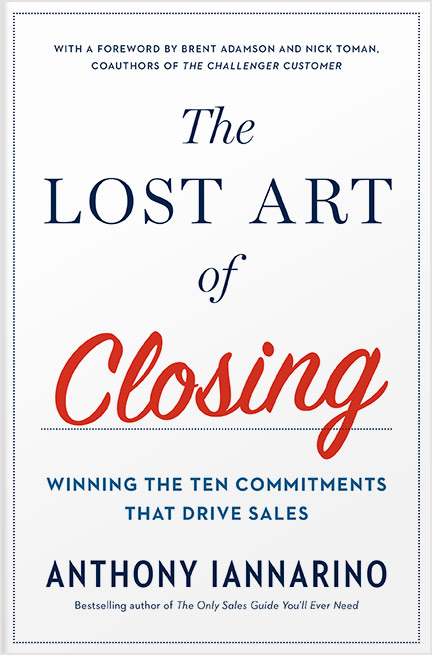From time to time, I take note of what I am seeing and write it down. I tend to look for the themes, trends, and patterns that either improve or harm sales. The following is what I see causing sales results to suffer.
Not Controlling the Process:
If I could recommend only one thing that would improve your effectiveness, it would be that you learn to effectively control the process, managing the sales conversations, recommend next steps, and helping your dream clients make change. Much of the time, our losses and our no decisions are the natural results of not gaining the commitments that help our prospects make a complex buying decision. (For more on controlling the process, see The Lost Art of Closing: Winning the 10 Commitments That Drive Sales).
Not Using the Right Medium for the Outcome:
You rely too heavily on email as a communication form, and your faith in its ability to generate the outcomes you need is not only unfounded, it is reckless. The more important the outcome, the more important the choice of medium. In order of effectiveness, 1) Face to face.2). Video face to video face. 3) Old reliable, the telephone, 4) Text message and, finally 5). Email. Why make your first choice a medium that allows your prospect to reject your request by merely ignoring—or more likely, deleting—said petition.
Fearing the Wrong Danger:
Avoiding conflict or problems or challenges don’t tend to improve things. Tiny monsters grow up to be big monsters, and you are always better dispatching them when they are manageable. Too many salespeople believe their relationship with a prospect will be damaged by engaging in difficult conversations when the truth is that trusted advisors routinely deal with the nastiest, foulest problems, challenges, and discussions. Instead of being fearful of having a conversation, be afraid of not having it and losing your credibility and your relevance.
Not Prospecting Using a Sequence:
If you make a call to your dream client in the first quarter of the year, followed by a call in each of the successive quarters, you are not prospecting; you are dabbling. A half-hearted effort isn’t enough to acquire the meetings that allow you to engage in the conversation that results in a new opportunity. A sequence of communications that explain the value you offer in trade for a meeting, consistently delivered, and in different mediums is what works now. (For more on Sequences and leading with insights and ideas, see Eat Their Lunch: Winning Customers Away from Your Competition)
Win customers away from your competition. Check out Eat Their Lunch
Too Little Time Selling:
There may be nothing more powerful in increasing and improving sales than spending more time selling. If you are not talking to clients, you are not selling. Of course, countless other things are vying for your limited time, energy and attention, but those things are necessary but not sufficient to increased revenue. Spending time selling is a force multiplier. (If you want a plan to get more done in less time, check out the B2B Sales Toolkit, also known as the Outcomes Planner).
If you want to improve your sales results, reverse what is on this list.









.jpg?width=768&height=994&name=salescall-planner-ebook-v3-1-cover%20(1).jpg)


